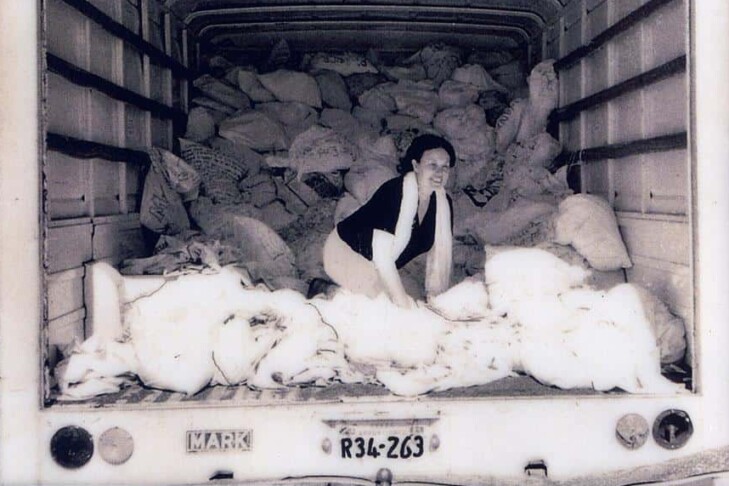Just as Torah is a framework for Jewish life that must be unpacked and investigated from many angles to understand the depth of its content and applicability to our own lives, so is great art. This series illuminates works of art that help contemporize the ancient text of the Torah. This special edition of Art D’var was written in collaboration with Chat GPT.
Vayakheil-Pekudei
March 18, 2023
25 Adar 5783
22nd and 23rd weekly Torah Portion
Exodus 35:1-40:38
6,181 Hebrew letters
1,558 Hebrew words
122 verses
The Torah portion of Vayakheil-Pekudei comes at the end of the book of Exodus and describes the completion of the construction of the Mishkan (Tabernacle), the portable sanctuary used by the Israelites during their journey in the wilderness. Some of the important lessons that can be derived from this portion include:
- The importance of community and unity: The construction of the Mishkan was a communal effort, and this portion emphasizes the importance of each individual contributing their skills and resources to benefit the greater community.
- The value of work and creativity: The artisans who were tasked with creating the various elements of the Mishkan were described as being filled with wisdom, understanding, and skill. This highlights the value of hard work, creativity, and craftsmanship.
- The significance of Shabbat: The portion emphasizes the importance of observing the Sabbath day as a day of rest and reflection.
There are various contemporary artists who explore themes of community, creativity, and spirituality in their work that can be linked to the themes of the Vayakheil-Pekudei Torah portion.
Specifically, Helène Aylon was a feminist artist who explored themes of ecology, spirituality, and social justice in her work. Her piece “The Earth Ambulance” (1982), one of her most known pieces, was a mobile installation that was displayed at the Museum of Modern Art in New York, and incorporated elements of the Tabernacle and emphasized the importance of caring for the Earth as a sacred space. The installation was designed to look like an ambulance, but instead of medical equipment, it was filled with soil, plants, and other natural materials. Aylon saw the Earth as a living organism in need of care and attention, and “The Earth Ambulance” was a call to action to care for the planet as we would care for a sick or injured person.
Aylon (1931-2020) grew up in a Jewish family in Brooklyn. Her Jewish identity and feminist beliefs influenced much of her artistic practice. In the 1970s, Aylon became known for her feminist art, which often incorporated traditional “women’s work” such as sewing and embroidery. Her work explored themes of gender roles, sexuality, and motherhood, and sought to challenge traditional patriarchal structures. In the 1980s, Aylon began to focus more on environmental issues, creating installations and sculptures that reflected her concern for the Earth and the impact of human activity on the environment.
Later in her career, Aylon began to explore Jewish themes and spirituality in her work. Her piece “The Liberation of G-d” (1994) was a series of paintings that reimagined traditional Jewish prayers and texts from a feminist perspective. In her later years, Aylon became more involved in Jewish environmental activism and founded the organization “The God Project,” which sought to connect environmental issues with Jewish spirituality.
Overall, Aylon’s work was characterized by a deep concern for the Earth, a commitment to social justice, and an exploration of spirituality and identity. Her work continues to be influential to artists and activists today.
In 2017, the Hadassah-Brandeis Institute in Waltham hosted a retrospective exhibition of Helene Aylon’s work entitled “Helene Aylon: Afterword.” The show included over 60 pieces spanning five decades of the artist’s career, including sculpture, painting, photography, and installation works.
The exhibition was organized around several themes that were central to Aylon’s practice, including Jewish identity, feminism, environmentalism, and political activism. One of the highlights of the show was a recreation of Aylon’s 1993 installation piece, “The Earth Ambulance,” which featured a decommissioned ambulance outfitted with a mobile greenhouse. The piece served as a powerful reminder of the artist’s commitment to environmental activism and her belief in the healing power of the earth.
Other notable works in the exhibition included selections from Aylon’s “Book of Return” series, which featured illuminated manuscript pages that reinterpreted biblical texts through a feminist and ecological lens. The series offered a new way of engaging with traditional Jewish texts and highlighted Aylon’s innovative use of materials and techniques.
The exhibition also featured several pieces that were deeply personal to the artist, including her “Altar Piece” sculpture, which was created as a tribute to her father who was a Holocaust survivor. The work incorporated found objects such as barbed wire and metal scraps to create a powerful symbol of remembrance and resilience.
Overall, “Helene Aylon: Afterword” offered a comprehensive survey of the artist’s career and highlighted her significant contributions to the fields of feminist art and Jewish spirituality. The show served as a testament to Aylon’s lasting impact on contemporary art and culture, and her ongoing commitment to social justice and political activism.
Indeed, Helene Aylon’s work resonates strongly with the themes of community, creativity, and spirituality found in the Vayakheil-Pekudei Torah portion. Her emphasis on the importance of caring for the Earth as a sacred space echoes the value of work and creativity in the construction of the Mishkan. Additionally, Aylon’s commitment to social justice and political activism reflects the importance of community and unity in the Torah portion.
Through her art, Aylon offers a powerful critique of patriarchal structures and a reimagining of traditional Jewish texts and prayers from a feminist and ecological perspective. Her work invites viewers to engage in a deeper exploration of their own identity, spirituality, and relationship to the natural world.
Overall, Aylon’s art serves as a testament to the ongoing relevance of the themes found in the Vayakheil-Pekudei Torah portion and the ways in which contemporary artists continue to draw inspiration from this rich tradition.
This post has been contributed by a third party. The opinions, facts and any media content are presented solely by the author, and JewishBoston assumes no responsibility for them. Want to add your voice to the conversation? Publish your own post here. MORE



